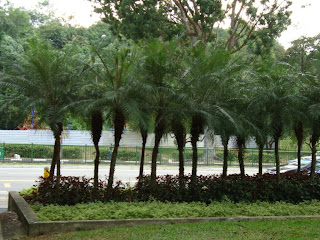 The plant
The plantNicolaia Elatior or the torch ginger flower is used in Singapore (and Southeast Asia) for its unique spicy flavour - where it is also an ingredient known as the rojak flower.
The photos were taken on a recent visit to the farm. I was just taking a leisure walk around and noticed that the torch gingers were in bloom. I should have taken some pictures of the plant growth so that you could have better imagined how the entire plant look like with the flower spikes - how marvellous it is that such delicate looking flowers should grow out of that messy cluster of leaves (much like heliconias but sparser and bigger leaves stalks).
 The personal-take
The personal-takeI first saw the blooming torch ginger when it was brought to me by one of the workers at my parents' farm. We didn't export this, he was showing it to me because he knew I didn't see it before. When informed that it was the rojak flower, I couldn't believe it - that such a beautiful delicate flower was used to flavor the blackish-messy-saladish-dish.
I think it's like the lotus of the land - because of how the inflorescence unfurls and how it grows from the dirty muddy soil.
In the end, we tried to export some of these flowers - but because we were not propogating them commercially, we only shipped a few boxes of 5 stems. Most of them were deliberately harvested when they were only slightly in bloom (like the picture on left) because they would otherwise be difficult to pack and bruise too easily.





















.JPG)




.JPG)






.JPG)
.JPG)




.JPG)








